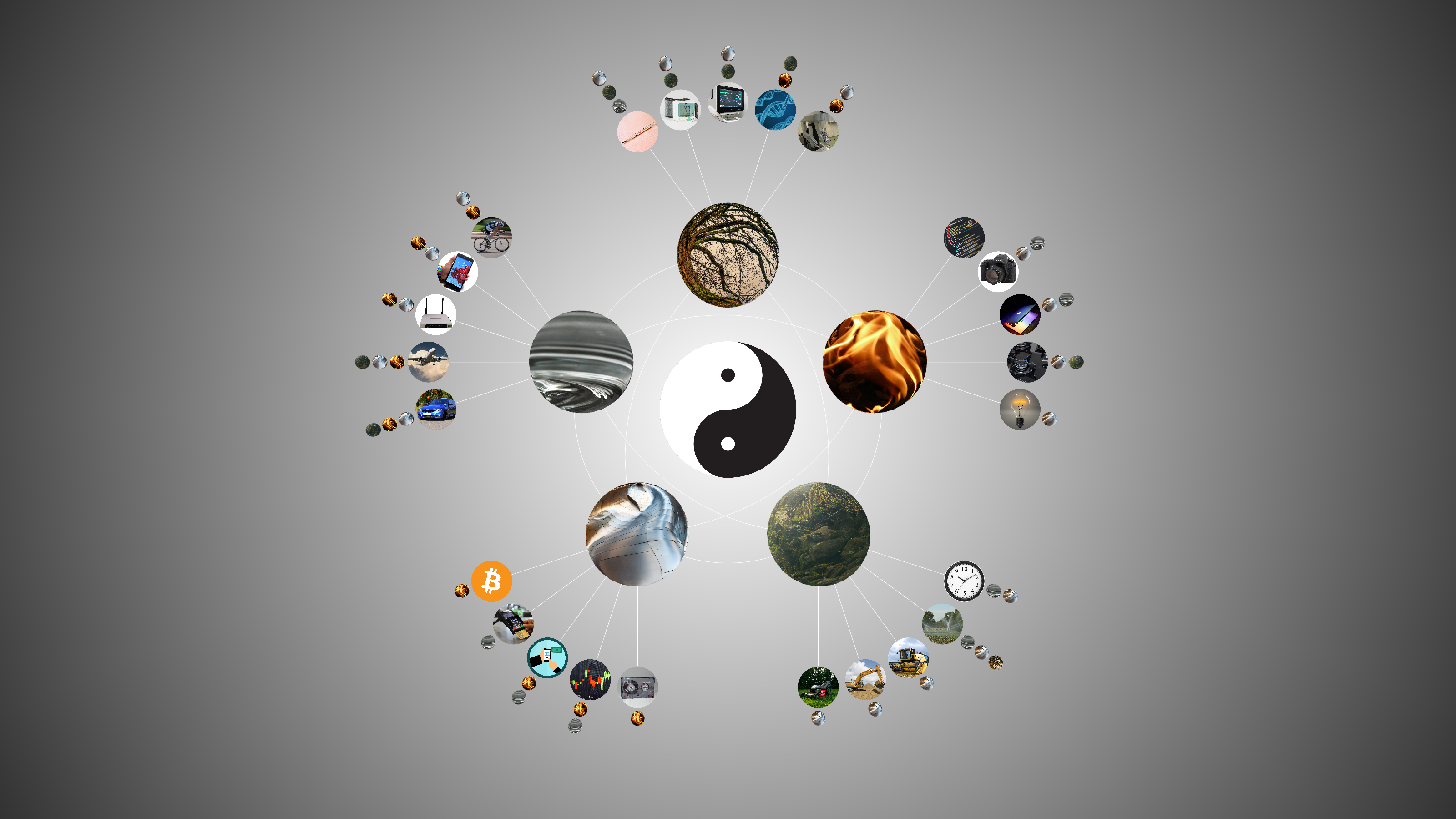A Chinese Five Element Classification System for Technical Objects. By Helena Wee

At the dawn of the Universe, from out of chaos yin and yang were born. Balancing these two forces created stable conditions. Interactions between yin and yang produced the five elements: wood, fire, earth, metal and water. These elements went on to form all things within the Universe. Sometimes they were referred to by their planetary names Jupiter, Mars, Saturn, Venus and Mercury. They were also called phases due to their ability to change from one to another according to changes in material attributes and seasons1. This was in contrast with the Greek's four element system of unchanging building blocks of matter.
When considering technical objects it is possible to view them, in a Cosmotechnical2 sense, as embodying one or more of these elements. The Classifier takes into account the object's material attributes, its' function, the energies it uses or converts, and its effects on the Universe. From this interrogation comes a careful discernment of relevant phases, in greater or lesser proportions, within the technical object. The resulting classification reveals a miscible combination of elements changing according to temporal variations in external conditions and interactions.
Wood is like Spring. Technologies associated with wood deal with organic life, growth, femininity, creativity and beginnings3. They might have a structure akin to trees which buds, splits and branches accordingly. Or they might have a function that pertains to life in some way, altering it, measuring it, extending it or combining with it. Examples include recombinant DNA (also consisting of fire and earth), heart monitors (also earth and metal), robotic surgeons (also fire and metal), and the internet itself (also water, with some metal and fire). Wood feeds fire.
Fire is the source of energy, intelligence, and ideas. It can exist in many forms, including heat, light, electricity and lightning. It is associated with Summer, a season of flowering, swelling and exuberant energy. Technologies reflecting these qualities include computer programs and algorithms (both pure fire), cooking appliances (also metal and sometimes earth), light bulbs (also metal), laptops (also metal and water), cameras (also metal and water), and batteries of all kinds (also metal and earth). Fire creates earth.
Earth engenders stability, endurance and the earth itself. It is transitional, correlating with Midsummer, a time of temperance, moderation and fruit maturing. After the ebullience of fire, earth levels out energies creating a more steadily balanced period. Technological objects said to be mainly earth exemplify this through similar temperaments. Examples are digging or extracting technologies (also metal), clocks and timepieces of all kinds (also water and metal) and all fossil fuels and technologies using them. Rare earth elements used in many green technologies are partly earth too, but are also metals. Earth bears metal.
Metal can relate to the materiality of metals, competitiveness, business and masculinity. Its properties include conductivity and magnetism. It is linked to Autumn when harvests traditionally consolidated reserves, a process analogous to metals solidifying on cooling. Most technologies have some metal associated with them due to its widespread use. Technologies rich in metal are those also exemplifying its other attributes, such as banking apps and algorithms (also fire and wood), online trading (also fire and wood), cassette tapes (also fire) and Bitcoin (also fire). Metal collects water.
Water is a component of anything that flows (such as oil or alcohol). It is integral to transport and communication. It can yield, bend, nourish and cleanse. It begets life, but if present in excess it can extinguish it. The season it is most associated with is Winter, a period of quiet, cold, stillness and retreat. Technologies that are mainly water include vehicles such as bicycles (also fire and metal), cars (also metal, fire and earth) and planes (also fire, metal and earth). Other examples are internet routers (also metal and fire), mobile phones (also metal and fire) and geotechnology controlling the flow of water itself for example dams (also earth, fire and metal). Water nourishes wood.
The cycle continues. Five element classification shows us that technology is not static or discrete, but instead constantly being and becoming as it follows its path through the temporal-spatial cosmos.
References
1. Hui, Yuk; "The question concerning technology in China: An Essay in Cosmotechnics"; Urbanomic Media Ltd, 2016.
2. https://en.wikipedia.org/wiki/Wu_Xing.
3. Hamilton, Patricia L.; "Feng Shui, Astrology, and the Five Elements: Traditional Chinese Belief in Amy Tan's The Joy Luck Club.", MELUS, Volume 24, Issue 2, pgs 125-145, June 1999.